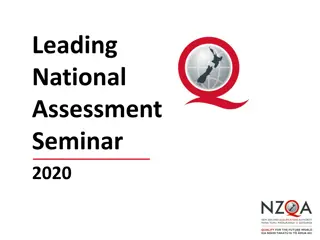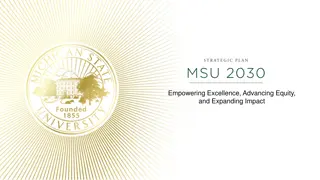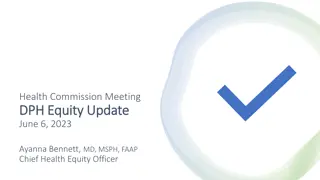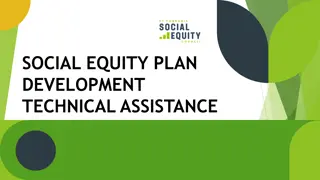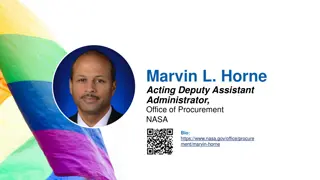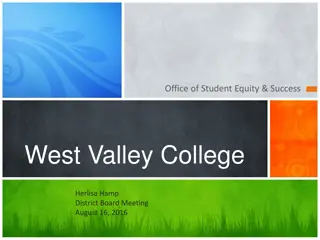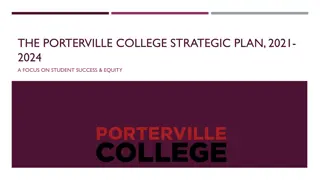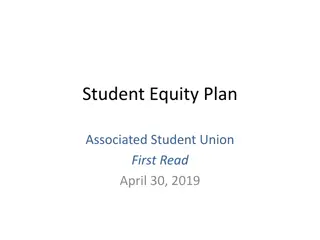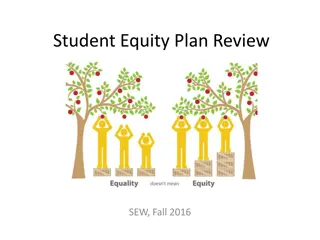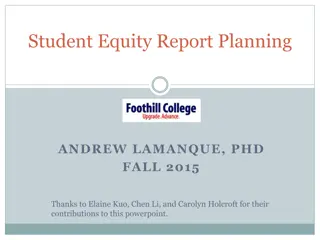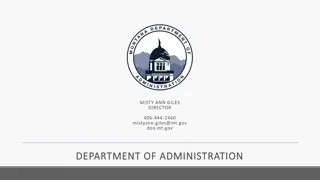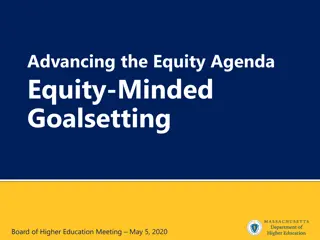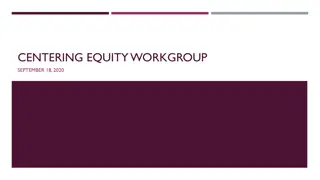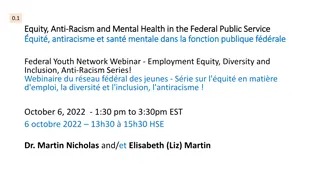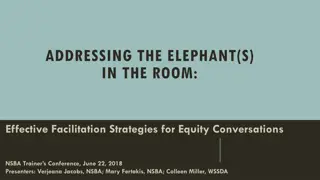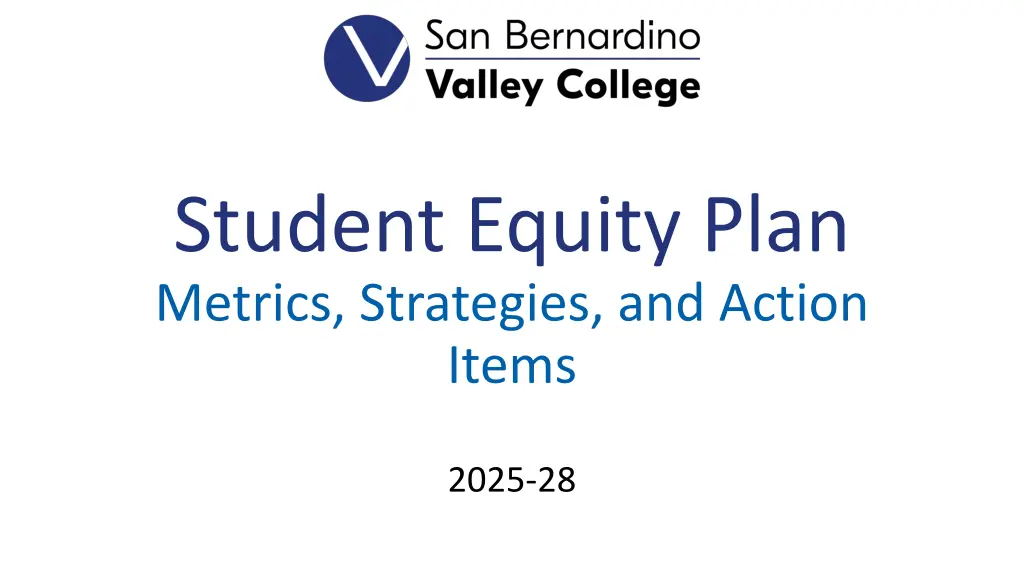
Student Equity Plan Metrics and Strategies for Success
Enhance student equity and achievement through key metrics, strategies, and action items for 2025-28. Explore successful enrollment, transfer-level completion, persistence, graduation goals, and university transfers. Additional data pieces and a student-centered dashboard are also highlighted, along with key strategies focusing on access, awareness, equity-minded instruction, and community engagement.
Download Presentation

Please find below an Image/Link to download the presentation.
The content on the website is provided AS IS for your information and personal use only. It may not be sold, licensed, or shared on other websites without obtaining consent from the author. If you encounter any issues during the download, it is possible that the publisher has removed the file from their server.
You are allowed to download the files provided on this website for personal or commercial use, subject to the condition that they are used lawfully. All files are the property of their respective owners.
The content on the website is provided AS IS for your information and personal use only. It may not be sold, licensed, or shared on other websites without obtaining consent from the author.
E N D
Presentation Transcript
Student Equity Plan Metrics, Strategies, and Action Items 2025-28
Student Equity & Achievement Metrics Metric 1: Successful Enrollment Metric 2: Transfer-Level Math and English Completion Metric 3: Term-to-Term Persistence Metric 4: Vision Goal Completion (Graduation) Metric 5: Transfer to 4-Year University
Additional Data Pieces In addition to the five SEA metrics, the Student Equity Plan requires colleges to examine: Education Plans Financial Aid* Student Accessibility Services (SAS) EOPS/CalWORKs Foster Youth Veterans Resource Center Credit for Prior Learning (CPL) Dual Enrollment* Strong Workforce Program *SBVC Priority
Student Equity & Achievement Dashboard bit.ly/sbvcsea
Key Strategies Access and Awareness Equity-Minded Instruction Create clear pathways and remove informational barriers so that prospective and current students understand their educational opportunities. Embed equity into teaching practices, hiring, and curriculum development to ensure students experience inclusive and culturally responsive instruction. Community Engagement Student-Centered Support Build strong, sustained partnerships with K- 12 schools, universities, local organizations, and regional networks. Provide proactive, personalized support, especially during specific markers in students educational journeys.
Metric 1: Successful Enrollment Access and Awareness Research and Inquiry Diverse Course Offerings Marketing Textbooks and Course Materials The percentage of first-time applicants who enroll by the end of that academic year (Summer to Spring). Community Engagement High School and Regional Partnerships Informational Sessions Disproportionately Impacted Students Student-Centered Onboarding Application and Enrollment Workshops Orientations and Onboarding Events Black/African American Filipino First-Generation White 35-49 years old
Access and Awareness Metric 2: Transfer-Level Math & English Research and Inquiry Marketing Textbooks and Course Materials Equity-Minded Instruction The percentage of students who successfully complete transfer- level Math and English in their first academic year. Corequisite Review Communities of Practice Curriculum/SLO Review Hiring Procedure Review Student-Centered Support Disproportionately Impacted Students Counselor Liaisons & Faculty Communication Learning Communities Education Plans Mentorship Models Black/African American Students w/ Disabilities 20-24 years old 40-49 years old
Access and Awareness Metric 3: Term-to-Term Persistence Research and Inquiry Marketing Textbooks and Course Materials Equity-Minded Instruction Corequisite Review Communities of Practice Curriculum/SLO Review Hiring Procedure Review The percentage of students who persist from their first primary term (Fall or Spring) to their second primary term. Student-Centered Support Counselor Liaisons & Faculty Communication Learning Communities Education Plans Mentorship Models Student Center Intentional and Targeted Messaging Disproportionately Impacted Students Black/African American White 20 years old or older First-Generation Male
Metric 4: Vision Goal Completion (Graduation) Access and Awareness Research and Inquiry Career and Academic Pathway (CAP) Review Marketing The percentage of students who graduate within three academic years of starting at SBVC. Student-Centered Support Education Plans Intentional and Targeted Messaging Counselor Liaisons Learning Communities Mentorship Models Disproportionately Impacted Students 19 years or younger Female Black/African American First-Generation LGBTQ+
Access and Awareness Metric 5: Transfer to a 4-Year University Research and Inquiry Career and Academic Pathway (CAP) Review Equity-Minded Instruction The percentage of students who transfer to a 4-year university within four academic years of starting at SBVC. Corequisite Review Communities of Practice Curriculum/SLO Review Hiring Procedure Review Student-Centered Support Disproportionately Impacted Students Counselor Liaisons Learning Communities Education Plans Mentorship Models Student Center Intentional and Targeted Messaging Male Hispanic Students w/ Disabilities First-Generation LGBTQ+
What can the Student Equity Planning Committee do to support you?

